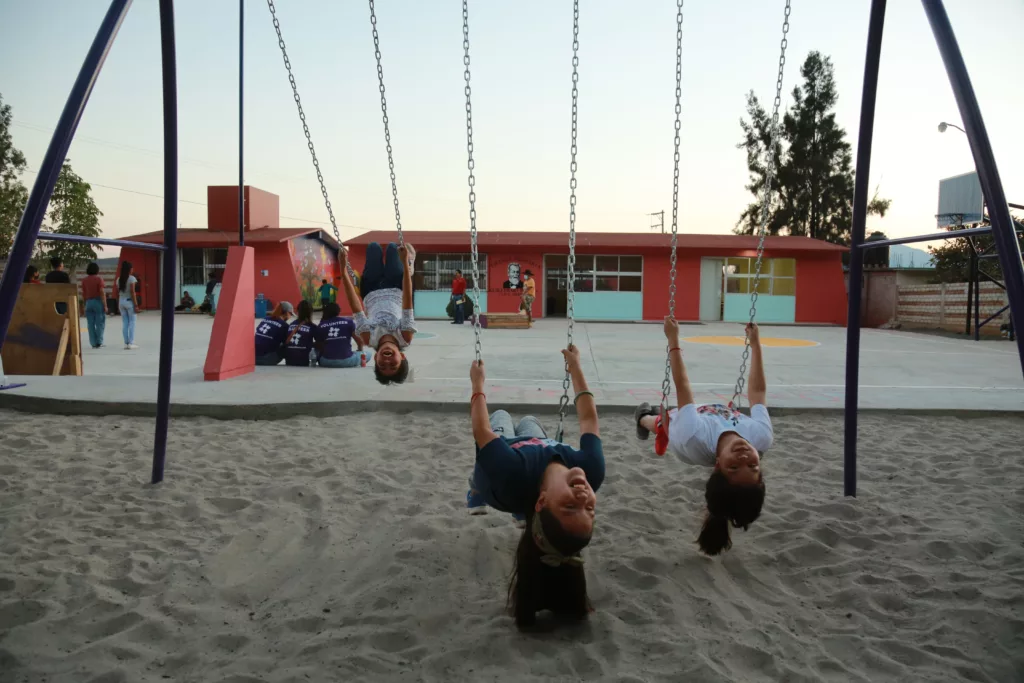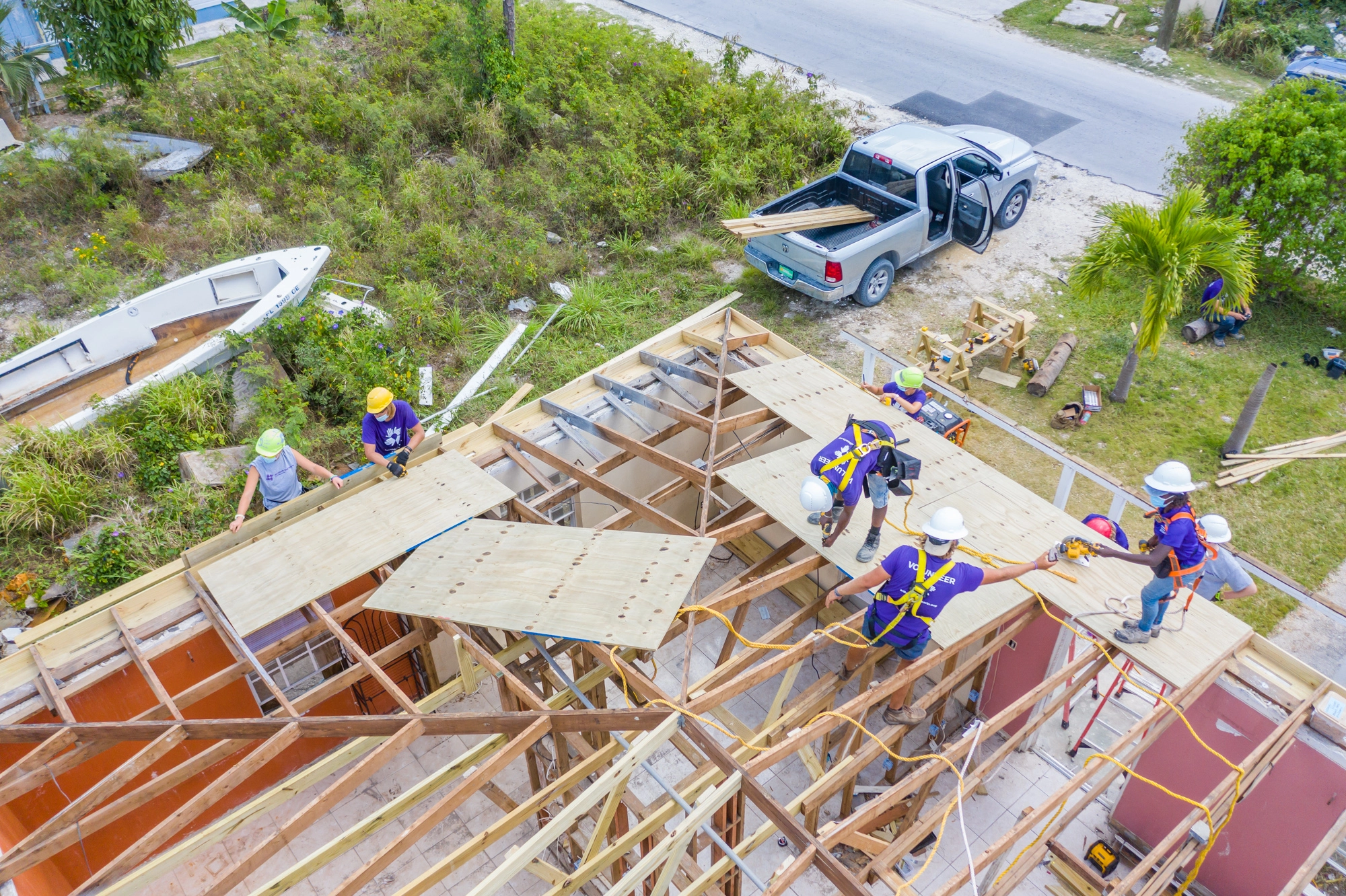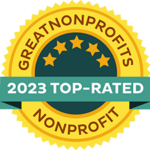damage beyond the storm
April 22, 2022
THE RIPPLE EFFECTS OF DISASTER
The disaster cycle may sound simple – disaster strikes, response, recovery and communities return back to normal.
Unfortunately, the reality is not so simple.
When disasters occur, there is frequently a ripple effect across sectors. The impacts often exacerbate existing systemic issues which leaves communities struggling to recover months, years and decades after the disaster. This recovery challenge can span a wide range and often does not receive adequate attention once out of the media cycle.
This is one key reason All Hands and Hearts (AHAH) is still present in communities several years after disaster strikes, such as The Bahamas, three years after Hurricane Dorian and Mexico, five years after the Puebla earthquake.

Long after disaster strikes and the media’s attention is drawn away, AHAH remains committed to impacted communities. We focus on longer-term recovery and resilience where some of the downstream effects of these disasters have been overlooked.
HEALTH RISKS
In early response days, the scopes are often clear – move the rubble, clean the homes, etc. However, the impact runs much deeper. Health risks in post-disaster environments are one critical example of this, such as those created by hazardous substances that have been disturbed or exposed due to the disaster like asbestos or mold.
There is a high risk of mold growth and development in a post-hurricane or flooding environment. Often, getting these homes to a dry enough state to be able to appropriately treat for mold takes time. Individuals who are displaced, more often than not, do not have alternative housing options, causing increased vulnerability to this threatening substance. That, coupled with an education component that is often lacking, might encourage people to treat their homes too soon. The urgency to rebuild and create a liveable space is necessary and understandable, but moving too quickly in this process covers up an issue that is likely to cause significant health concerns in the future.

Given the widespread need for mold sanitation and lack of education around it, AHAH is providing materials and training to support families in the long term recovering from the devastating Kentucky Floods. This is similar to the training and capacity building conducted earlier this year with ProTechos in Puerto Rico, where AHAH personnel trained a local organization in the safe and effective execution of this work scope.



LIVELIHOODS
Economically, communities suffer when infrastructure is damaged, often wiping away people’s entire livelihoods. Given the expense to respond and rebuild, the economic downturn can take significant time to swing back to normal.
We see this across the world, particularly when small businesses are physically destroyed or simply cannot afford to operate given the spike in the cost of resources. Response and long-term recovery efforts may also be delayed as people often need to prioritise their livelihoods to earn an income and sustain their families.
This was evident this year after Hurricane Agatha made landfall in Mexico and post-flood in Durban, South Africa, where communities rallied early on but very quickly needed to refocus on their livelihoods.


This is significant as well in tropical locations whose primary economies are driven by tourism, such as the Virgin Islands, The Bahamas and the Philippines. Once disasters happen and tourism significantly drops, economies lose their main drivers, making recovery more difficult and drawn out.
This concept was critical in the design and implementation of the AHAH fishing boat repair program in Araceli, Philippines that occurred earlier this year. The program focused on restoring boats and therefore livelihoods of fisherfolk in a small island community. It is also part of our community-driven holistic approach, where we aim to hire and support national staff on our international programs, adding another element to the recovery effort.



EDUCATION
Sometimes, even several months or years after disasters, basic needs are still difficult to meet, including shelter and education. While communities begin to recover, students are often left without a place to learn.
There is a critical need for early, temporary learning spaces but the longer-term need to repair and rebuild schools can take years. Often students will share learning spaces, resulting in cramped, uncomfortable conditions that are not conducive to a positive learning environment. Alternatively, the shared spaces can result in the shortening of school days for rotating classes of students. Children are left with fewer resources than adequate to receive proper education in the long term.


Photo by Jas Chapagain
It is important to think of these needs at all phases of the disaster. In Southern Leyte, Philippines, our work involves creating Temporary Learning Spaces (TLS’s) to address the initial, critical need after Typhoon Rai (locally known as Odette) devastated much of the educational infrastructure. Simultaneously, our Program Development Team (PDT) is exploring options for long-term school rebuilds in the area. This holistic view of disaster relief is why, five years after the Puebla Earthquake, we are still rebuilding schools in Mexico, and seven years after the Nepal earthquake, we are about to begin our 25th school project.




We are seeing disasters daily across the globe. While they may flicker in and out of the news cycle, a single disaster can devastate a community. The effects deep and far-reaching across sectors for years to come.
It is critical, as a disaster relief organization, to work alongside those impacted communities, understand the true unmet local needs, and, through that guidance, support with sustainable and resilient initiatives.













